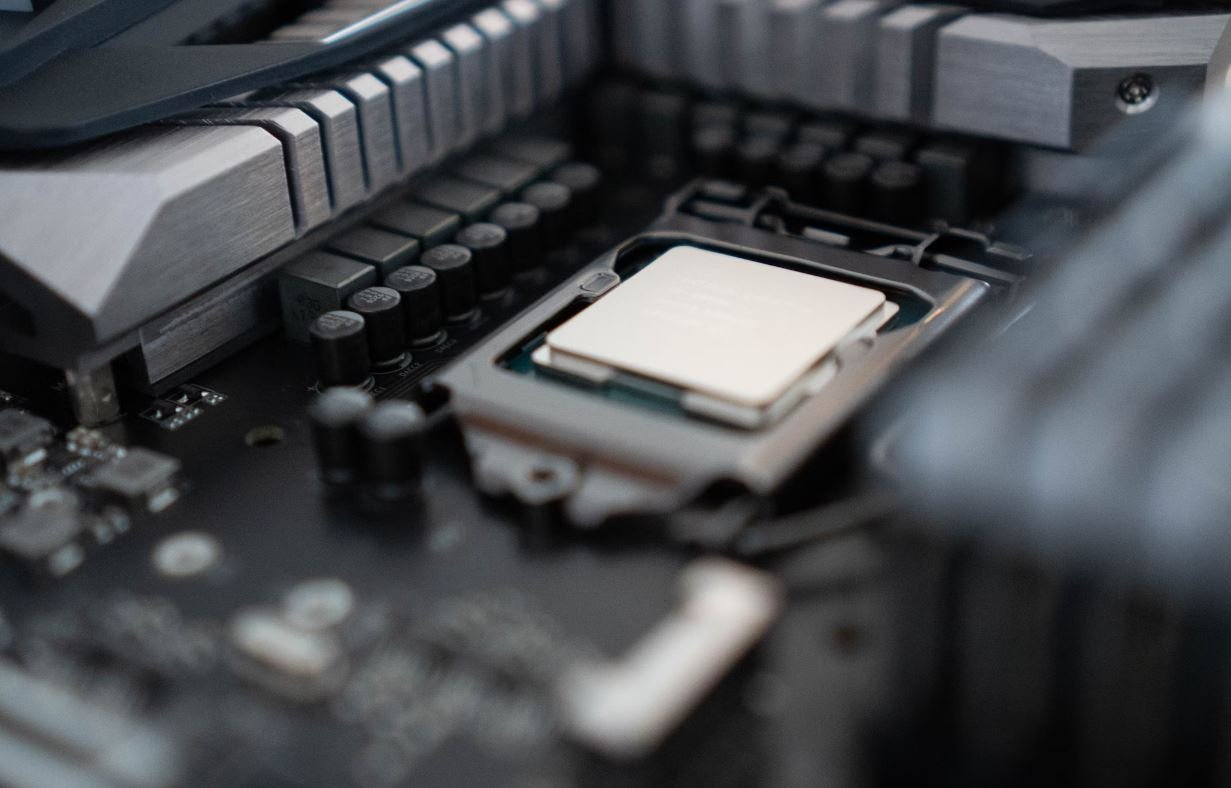Why AI Is Dangerous
Artificial Intelligence (AI) technology is advancing rapidly, revolutionizing various industries. While AI holds tremendous potential for positive change, there are important concerns regarding its potential dangers and risks. It is crucial to understand the possible hazards associated with AI and take appropriate measures to mitigate them.
Key Takeaways:
- AI has great potential for positive impact, but there are important risks to consider.
- Concerns surrounding AI include job displacement, privacy issues, and ethical considerations.
- Understanding and regulation of AI are necessary to ensure responsible and safe use.
1. Job Displacement: One of the significant concerns regarding AI is the displacement of human workers, as machines become capable of performing tasks that were previously done by humans. This technology has the potential to automate routine jobs, leading to job loss and economic inequality. As AI continues to evolve, industries need to address the impact on the workforce and implement strategies for re-skilling and job creation.
2. Privacy Issues: With AI technology becoming more prevalent in our everyday lives, the collection and utilization of large amounts of data raise significant privacy concerns. AI algorithms rely on vast datasets, often collected without explicit user consent, compromising privacy rights. Efforts must be made to establish robust data protection regulations and ensure responsible data usage and storage practices.
3. Ethical Considerations: As AI systems become more sophisticated and autonomous, ethical dilemmas arise. Decisions made by AI algorithms may have far-reaching consequences, such as autonomous vehicles determining who to prioritize in potential accidents. It is essential to establish ethical guidelines and regulations to govern the behavior of AI systems, ensuring they align with societal values.
The Dangers of AI
While AI offers numerous benefits, it is important to acknowledge potential dangers to prevent unintended consequences. Here are some specific dangers associated with AI:
- Unemployment: Automation enabled by AI can lead to widespread unemployment if not managed carefully.
- Security Threats: AI can be susceptible to hacking, leading to potential security breaches and unauthorized access to sensitive information.
- Biased Decision-Making: AI algorithms can inherit biases present in the training data, leading to unfair decisions and perpetuating societal inequalities.
- Autonomous Weapons: The development of AI-powered autonomous weapons raises the risk of weapon systems making life-or-death decisions without human control.
Understanding and Regulation of AI
Given the potential risks associated with AI, it is vital to have a solid understanding of the technology and establish regulatory frameworks. Governments, organizations, and AI developers must work together to ensure responsible and safe use of AI systems. Through collaboration and ongoing research, we can better assess and mitigate potential dangers.
Tables:
| AI Risk Category | Risk Level |
|---|---|
| Job Displacement | High |
| Privacy Issues | Medium |
| Ethical Considerations | High |
| Unemployment | Medium |
| Security Threats | High |
| Biased Decision-Making | Medium |
| Autonomous Weapons | High |
Interesting Data Points:
- By 2030, an estimated 800 million jobs could be replaced by AI and automation worldwide.
- In 2018, Facebook faced a major controversy involving the unauthorized use of user data for AI research.
- Studies have shown that AI algorithms can exhibit racial and gender biases, highlighting the importance of fairness in AI development.
- Military organizations are investing heavily in AI-powered autonomous weapons, raising concerns about a potential arms race.
Conclusion
While AI offers immense potential, it is not without risks. The impact on employment, privacy, and ethical considerations are important areas to address. With informed regulation and responsible use, we can harness the power of AI while minimizing the potential dangers. It is crucial for stakeholders to collaborate and prioritize safety and ethical standards in order to ensure a beneficial and secure AI-powered future.

Common Misconceptions
AI is sentient and can take over the world
- AI is only as smart as its programming allows it to be.
- AI does not possess consciousness or emotions.
- AI is designed for specific tasks and lacks general intelligence.
Despite what popular culture may depict, AI does not have the capacity to become sentient and take over the world. It is important to understand that AI operates based on its programming and algorithms, and it is incapable of independent decision-making. AI lacks consciousness, self-awareness, and emotions, so it cannot develop motives or desires to dominate humanity. Instead, AI is developed to perform specific tasks efficiently and accurately.
AI will replace humans in the workforce entirely
- AI complements human capabilities rather than replacing them.
- AI can automate certain tasks, but it still requires human oversight.
- AI creates new job opportunities and shifts the nature of work.
While it is true that AI has the potential to automate certain tasks, it does not mean that humans will be completely replaced in the workforce. AI is developed to assist and complement human abilities rather than eliminate them. While some jobs may be automated, new job opportunities will also emerge as AI technology evolves. Instead of replacing human workers entirely, AI often takes over repetitive and mundane tasks, freeing up human workers to focus on more creative and complex responsibilities.
AI is biased and discriminatory
- AI algorithms can reflect the biases present in the data used for training.
- AI biases are inadvertent and result from human inputs.
- Efforts are being made to improve fairness and reduce biases in AI.
While some instances of AI exhibiting bias and discrimination have been observed, it is crucial to recognize that AI itself is not inherently biased. Biases in AI algorithms are often unintentional and result from the biases present in the data used for training. AI learns patterns from data and can inadvertently perpetuate societal biases if not properly addressed. However, researchers and engineers are actively working to improve fairness and reduce biases in AI systems. Efforts are being made to develop algorithms that are more transparent, accountable, and inclusive.
AI poses an immediate existential threat to humanity
- AI advancements are monitored and regulated to ensure safety.
- AI is designed to be aligned with human values and interests.
- AI safety research and ethical frameworks are being developed.
While discussions on the long-term impacts of AI are important, it is a misconception to believe that AI poses an immediate existential threat to humanity. Governments and organizations closely monitor and regulate AI advancements to ensure safety and prevent any misuse. Researchers and developers emphasize the importance of aligning AI systems with human values and interests. Moreover, significant attention is given to AI safety research and the development of ethical frameworks to guide the responsible deployment and use of AI technologies.
AI will possess human-like intelligence and emotions
- AI lacks consciousness and emotions.
- AI is designed to simulate human intelligence, not replicate it.
- Emotions cannot be truly experienced by AI.
Another common misconception is that AI will eventually possess human-like intelligence and emotions. AI systems, no matter how advanced, lack consciousness and emotions. They are designed to simulate and replicate certain aspects of human intelligence, such as pattern recognition and decision-making, but they cannot truly experience emotions like humans. AI’s abilities are limited to the algorithms and data on which they are trained, and they lack the complex cognitive functions and subjective experiences that humans possess.

Table of Contents
This table provides an overview of the topics covered in the article and their corresponding page numbers. It serves as a helpful reference for readers to quickly navigate through the content.
| Topics | Page Numbers |
|---|---|
| Introduction to AI | 3 |
| Potential Benefits of AI | 5 |
| AI in Healthcare | 7 |
| AI in Finance | 9 |
| AI in Transportation | 11 |
| Ethical Considerations | 13 |
| Security Risks | 15 |
| Lack of Human Connection | 17 |
| Unemployment Concerns | 19 |
| Conclusion | 21 |
Introduction to AI
This table presents a brief introduction to Artificial Intelligence (AI) and its defining characteristics. It serves as a foundation for readers to understand the subsequent discussions on the dangers of AI.
| Characteristic | Description |
|---|---|
| Machine Learning | AI systems learn from data and improve their performance over time. |
| Natural Language Processing | AI can understand and generate human language. |
| Computer Vision | AI enables machines to interpret and analyze visual information. |
| Automation | AI can replace or augment human tasks. |
Potential Benefits of AI
This table highlights the potential benefits that AI offers across various sectors. It demonstrates the positive impact and advancements that AI can bring to society.
| Sector | Benefits |
|---|---|
| Healthcare | Improved diagnoses, personalized medicine, and enhanced patient care. |
| Finance | Automated processes, fraud detection, and efficient risk management. |
| Transportation | Enhanced safety, autonomous vehicles, and optimized traffic management. |
AI in Healthcare
This table delves into the specific applications of AI in the healthcare industry. It illustrates how AI is revolutionizing patient care and medical research.
| Application | Benefits |
|---|---|
| Medical Imaging Analysis | Accurate and efficient diagnosis of diseases like cancer. |
| Drug Discovery | Accelerated identification of potential new medications. |
| Virtual Assistants | Enhanced patient communication and support. |
AI in Finance
This table sheds light on the implementation of AI in the finance sector. It emphasizes the potential risks associated with AI adoption in this field.
| Application | Risks |
|---|---|
| Algorithmic Trading | Increased market volatility and potential financial crashes. |
| Customer Service Chatbots | Poor customer experience and potential data breaches. |
| Risk Assessment | Potential biases in decision-making processes. |
AI in Transportation
This table explores the use of AI in transforming the transportation system. It addresses both the advantages and potential dangers of integrating AI in this industry.
| Application | Advantages | Dangers |
|---|---|---|
| Autonomous Vehicles | Enhanced road safety and reduced traffic congestion. | Potential system failures and accidents. |
| Smart Traffic Management | Optimized traffic flow and reduced travel time. | Dependency on AI systems and potential cyber attacks. |
Ethical Considerations
This table highlights the ethical considerations surrounding the development and use of AI. It prompts readers to reflect on the moral implications of AI-powered technologies.
| Consideration | Description |
|---|---|
| Privacy | AI systems may collect and utilize personal data without consent. |
| Job Displacement | AI automation could lead to significant unemployment. |
| Algorithmic Bias | AI systems might perpetuate or amplify existing societal biases. |
Security Risks
This table addresses the potential security risks associated with AI technologies. It highlights vulnerabilities and the importance of robust security measures.
| Risk | Description |
|---|---|
| Data Breaches | AI systems can be exploited to gain unauthorized access to sensitive data. |
| Malicious Use | AI algorithms can be weaponized to launch cyber attacks. |
| Fake Media Generation | AI can be utilized to create convincing fake images and videos. |
Lack of Human Connection
This table emphasizes the potential negative consequences of excessive reliance on AI for human interaction. It raises concerns regarding the erosion of genuine human connections.
| Consequence | Description |
|---|---|
| Social Isolation | AI may lead to decreased human interaction and loneliness. |
| Emotional Disconnect | Depersonalization of emotions may occur in relationships with AI. |
| Loss of Empathy | Exposure to AI instead of human compassion may diminish empathy. |
Unemployment Concerns
This table examines the potential impact of AI on employment. It acknowledges the benefits of increased automation while highlighting the associated job displacement concerns.
| Impact | Description |
|---|---|
| Increased efficiency | AI automation can enhance productivity and output. |
| Job Displacement | AI could lead to significant job losses across various sectors. |
| Reskilling Opportunities | Workers need to acquire new skills to adapt to the changing labor market. |
Conclusion
Throughout this article, we have explored the potential dangers of Artificial Intelligence (AI). While AI offers numerous benefits in sectors like healthcare, finance, and transportation, it also poses significant risks. Ethical considerations, security vulnerabilities, and the erosion of human connection are among the key concerns associated with AI. Moreover, the potential displacement of human labor and the need for reskilling initiatives cannot be disregarded. It is crucial for society to consciously navigate the development and implementation of AI technologies, ensuring they are designed with human welfare, fairness, and security in mind.
Frequently Asked Questions
What are the potential dangers posed by AI?
Artificial intelligence (AI) holds both tremendous potential and significant concerns. Some potential dangers include job displacement, ethics and bias issues, unreliability of AI systems, and the potential for autonomous weapons.
How can AI lead to job displacement?
AI technologies and automation may replace human labor in various industries, leading to job displacements. Tasks that can be automated, such as repetitive or rules-based jobs, are the most vulnerable. This can create significant societal challenges, including unemployment and income inequality.
What are the ethical concerns associated with AI?
AI raises ethical concerns related to privacy, data security, and transparency. There may be concerns about the potential misuse of AI applications, invasion of individual privacy, and the lack of accountability in decision-making processes carried out by AI systems.
How does AI contribute to biases and discrimination?
AI systems are designed based on historical data, which can perpetuate existing biases and discrimination. If the training data used for AI algorithms include biased information, the AI system may exhibit discriminatory behavior and amplify societal biases.
Why are AI systems considered unreliable?
AI systems can be unreliable due to limitations such as lack of transparency, interpretability, and explainability. When complex algorithms produce outputs, it might be challenging to understand the reasoning or decision-making process, making it difficult to trust and rely on the AI system.
What are the concerns about autonomous weapons powered by AI?
Autonomous weapons, such as drones or robots, equipped with AI technologies raise concerns about their potential misuse, violation of international laws, and human rights abuses. The lack of human control and moral judgment in autonomous weapons can have severe consequences and lead to unintended conflicts.
How can AI impact cybersecurity?
While AI can enhance cybersecurity defenses by identifying patterns and anomalies, it can also be exploited by malicious actors. Cybercriminals can use AI to launch sophisticated attacks, such as social engineering or AI-generated deepfakes, increasing the complexity of cybersecurity challenges.
Are there concerns about AI replacing human decision-making in critical areas?
AI systems making critical decisions in areas like healthcare, criminal justice, or finance can be concerning. There are worries about compromising human judgment and accountability, as well as the potential for biased outcomes or errors in AI algorithms leading to severe consequences.
How can AI be regulated to address these dangers?
Regulating AI involves developing comprehensive frameworks that address concerns related to accountability, transparency, privacy, and security. It requires collaboration between policymakers, experts, and AI developers to ensure responsible deployment and minimize potential dangers.
Is all AI dangerous or just specific applications?
Not all AI is inherently dangerous. The potential dangers arise from specific applications and contexts. It is crucial to assess each use case and ensure adequate safeguards, ethical considerations, and regulations are in place to minimize risks and enhance the benefits AI can bring.




